Exit Interview
mnartists.org director Scott Stulen recently left to become a curator for the Indianapolis Museum of Art. In the weeks before he packed up his family to move, we sat him down for a candid conversation on the state of Minnesota's arts scene.
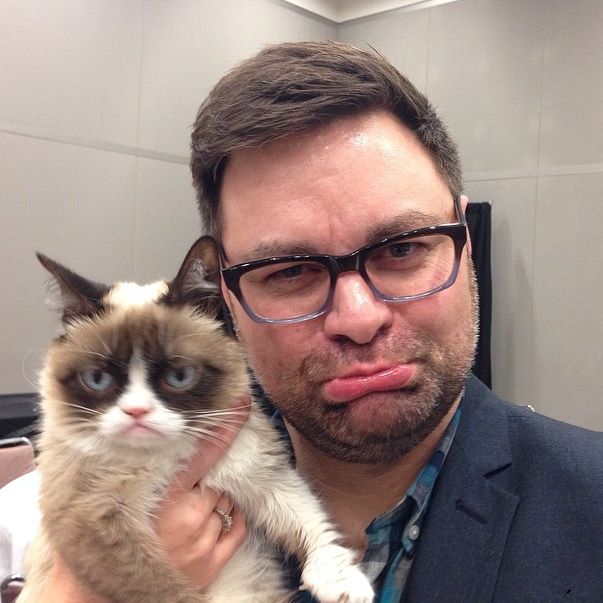
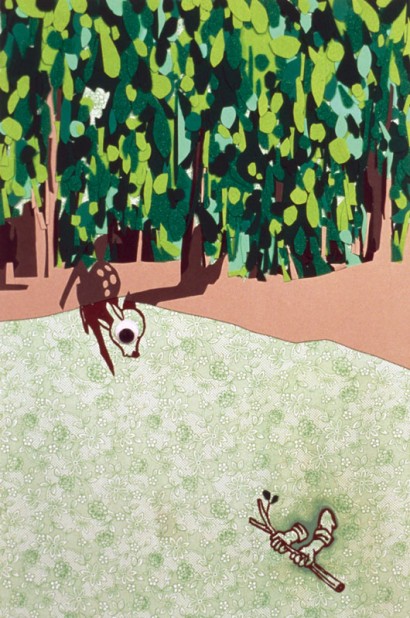
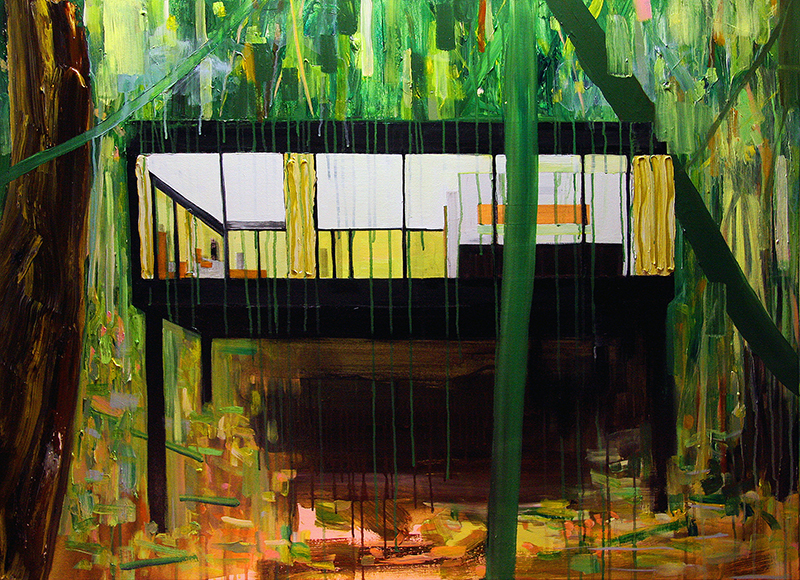
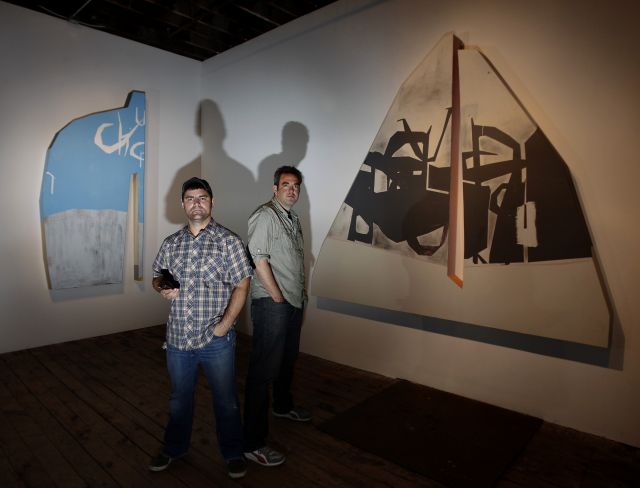
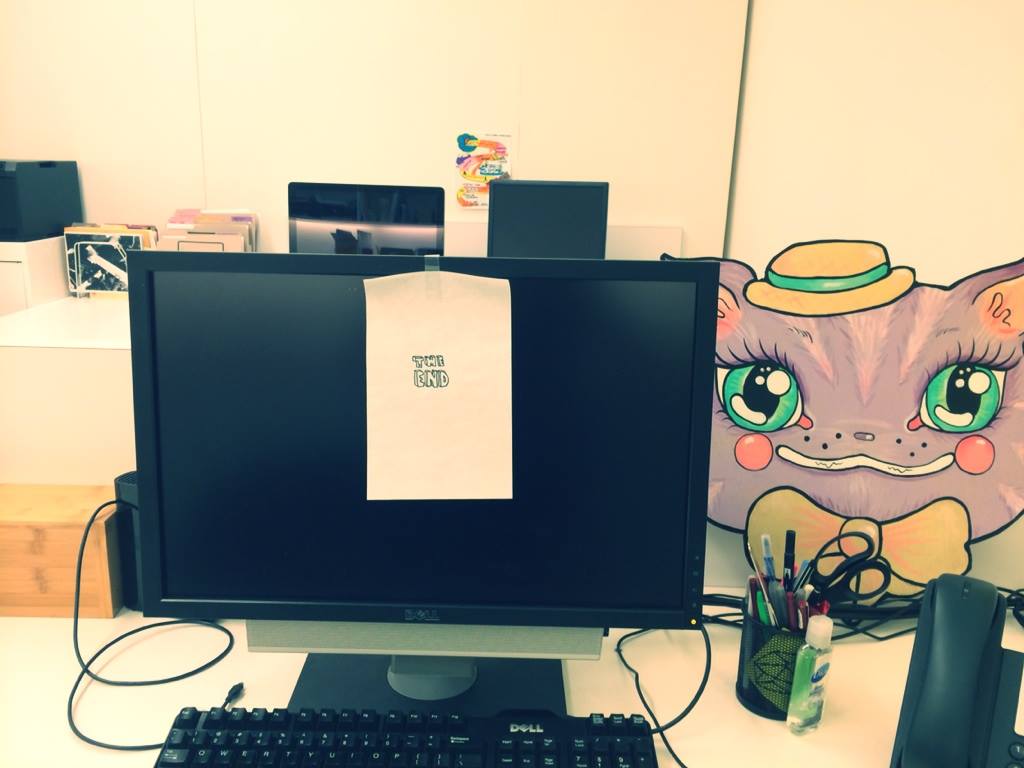
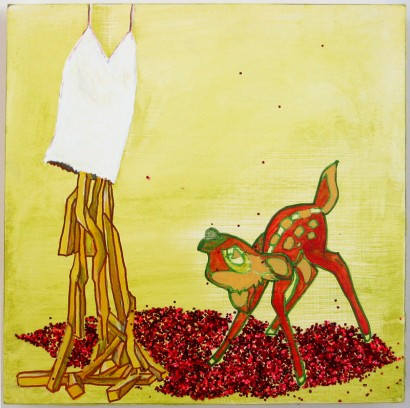
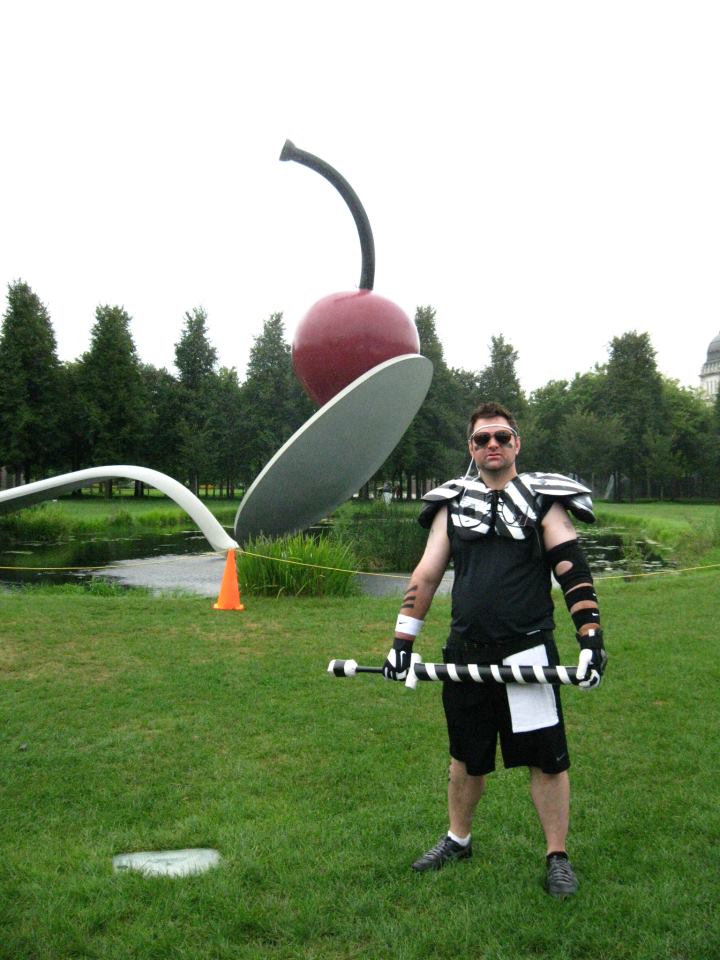
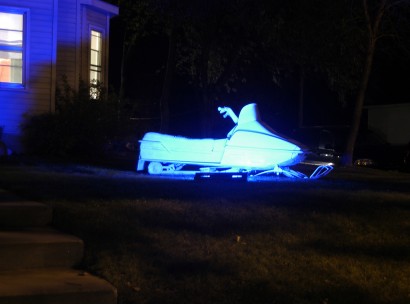
MNARTISTS’ DIRECTOR SCOTT STULEN LEFT MINNESOTA THIS MONTH for a new position, Curator of Audience Experiences and Performances at the Indianapolis Museum of Art. A native of Spicer, Minnesota, Stulen has helmed mnartists.org since 2008. But he’s not only a curator and arts administrator, he’s a well-regarded visual artist in his own right. He graduated with a master of fine arts degree from the University of Minnesota in 2004 and, from there, went on to work at Rochester Art Center – first, as Curator of Education and then Assistant Curator in the course of his four years there. When he moved to Minneapolis to be Project Director for mnartists.org, Stulen also became an integral part of the team behind the Walker’s nationally recognized Open Field programming. In recent years, he curated the Soap Factory’s second Minnesota Biennial in 2010, with Rochester Art Center curator Kris Douglas; he opened (and closed) a conceptual project space, Sellout, with Ruben Nusz and John Fleischer, and was the director of the McKnight Artist Fellowship for Photographers for five years. Stulen served on the boards of the Soap Factory and TuckUnder Projects and DJ-ed countless events under the moniker Black Lacquer. All the while, he continued his own studio practice, showing work in galleries around the country.
And then, cats.
A summer program he developed with mnartists’ assistant Katie Czarniecki Hill for the Walker’s 2012 Open Field went viral. It was originally conceived as a lark, an ad hoc screening of internet cat videos on the arts center’s grassy hill, powered by a laptop and a case of beer, but once it was publicly announced, the scale snowballed – some 10,000 people turned out for the event. The festival was covered in media outlets all over: Time magazine, Slate, The Atlantic, The Guardian, Jezebel, Vice, New York Times, and elsewhere.
After the megahit that was the first Internet Cat Video Festival (and the ensuing controversy surrounding a “Big Five” art institution fielding such an event) came a whirlwind press tour that took Stulen to cities across the country as the face of the festival. He presented at CultureTECH (Derry, Northern Ireland), IFP Conference (New York), TEDx (Indianapolis) and twice at the SXSW Interactive conference (Austin).
And now, thanks to that plum job offer at the Indianapolis Museum of Art, he’s off the mnartists.org payroll and ensconced in his new Indianapolis office this week, preparing for the possibilities that await him in another rapidly-changing Midwestern art institution. But we’re not letting him off the hook quite yet. Before he packed up his home and family, we hit him up for some candid parting thoughts, advice and reflections on his time here. Read on for his exit interview.
____________________________________________________
Nathaniel Smith
We’ve had several (off-the-record) conversations in the past about how soft the Twin Cities’ press is to artists and, more generally, the tendency in the whole arts community to shy away from any kind of public criticism. People will say “good show” at an opening, but then criticize it as soon as the artist is out of earshot. Now that you are leaving and no longer need to depend on anyone here (to get shows, or jobs, or make professional connections), you’re free to give the kind of honest, forthright and potentially critical perspective that our arts community really needs to hear, but almost never does.
So, how does the Twin Cities arts scene seem different than when you first arrived? Are there myopic, Minneapolis-centric concerns that seem never to change?
Scott Stulen
First of all, some context for me as well: while I have worked as a representative of a wide variety of disciplines in Minnesota as Project Director of mnartists, my work as an artist and my personal network is heavily skewed to the visual arts, so some of my answers will share that bias.
Right now, it’s a good time to be an artist in Minnesota. The passing of the Legacy Amendment, the outside influx of support from the Knight Foundation in St. Paul, alongside continued funding from the Jerome and McKnight Foundations provide a fertile funding base. Social practice work, in particular, has taken strong root in the cities and is being nurtured by several of these funding sources, as well as programs like Open Field, Forecast, Irrigate and Northern Spark. The Twin Cities has a strong network of long-standing nonprofit galleries which support local and regional artists, but the commercial gallery scene is nearly gone, aside from Thomas Barry, David Petersen, Groveland and Weinstein. But that is not news, and it is not unique to Minnesota. The reality is that it’s nearly impossible to make a living just by selling work here, which makes philanthropic and state support for the arts both crucial and competitive.
I am not sure if things have changed in Minnesota’s art scene, or if I am just older, a bit more jaded and now see it from different angles than I once did. But the increase in civic and foundation funds have made the scene not just competitive, but at times more hostile and bitter. This happens any time money becomes part of the equation, but I’ve definitely noticed an uptick in the amount of discourse around the “have and have-nots”.
Nathaniel Smith
I know I am personally growing tired the near-constant cycle of conversations about problems in the local arts community, what’s going badly. I recognize the irony of that, given the fact that it’s my State of the Arts series for l’etoile that probably first put me on anyone’s radar. (It’s how I met you.) And we’re doing some of that here, admittedly.
So, take the big picture view for us. From your perspective, having worn many hats as an artist, grants administrator, curator and program manager at one of the major contemporary art museums in the country, what are we doing right in Minnesota as an arts community? What are we doing wrong? What needs to change to better support artists as they proceed in their careers? And how much needs to come from the artists themselves?
Scott Stulen
There are many ins and outs, of course, and lots of mitigating factors for why artists succeed (or don’t). But most often, in my opinion, it comes down to artists simply not making work that’s strong enough to merit national recognition and attention. The big fish in our small pond complain, but I am very rarely blown away by anyone’s ambition or exhibitions. Now I could say this of many other cities as well. It’s more that I’ve come to the realization that the larger “art world” is and likely to stay highly competitive, and as a Midwest artist you need to do even more to get people’s attention.
The Minnesota art scene is fiercely loyal, filled with proud artists and arts supporters. We have generous and visionary foundations, unprecedented state arts funding, colleges and universities and world-class museums and arts organizations. Minnesota has an unrivaled base of resources for its population and city size. Visitors often remark on the feeling of community among artists in the Twin Cities. And they are right. To put it bluntly: we have a lot of advantages and a level of support that very few other art communities have. But it’s not perfect.
There are deficiencies, areas of weakness in the ecosystem as well. In my past positions, I would field frequent questions from artists seeking reasons as to why they weren’t getting shows or grants. They wanted to know why they weren’t receiving what they felt was deserved recognition. While each case is unique, their questions for me would often focus on things like how to tweak their artist statement or CV — as if they just needed to get the peripheral elements right. But they’d avoid the big question: Is my work good enough?
It is hard to talk directly to artists about their work. Maybe this reluctance to criticize is an offshoot of “Minnesota Nice,” but it often manifests itself in passive-aggression, too. As you mention in your initial question: to their faces, artists are often told “nice show,” and then the same people rip it as soon as they leave the room. I’m hungry for more honest critique – I don’t mean being mean or snarky, but rather the kind of genuine, straightforward debate that not only improves your work, but that trains you, as an artist, to more effectively talk about and defend your work as well.
In a similar vein, I’d agree that more critical arts writing, more cultural coverage in general, is needed. As you called out in your “State of the Arts” series, meaningful criticism is the missing leg on the table right now. The shift to content-rich formats for the coming mnartists relaunch and the new Walker website gives reason for hope in that regard, as do arts-heavy publications like The Third Rail, Thirty Two, Paper Darts, Wopozi and others. What we really need are more confident voices to fill these platforms, particularly in the visual arts. We need brave voices, artists and writers willing to take a public position on work they see without worrying about whether it’s politic, or might close doors for their own artistic pursuits. That’s a real fear, and one that I have had myself. That ambivalence also makes it challenging to nurture and retain promising arts writers.
We are doing many things right in Minnesota, but it can be an even better scene. The working tag line for the new mnartists.org site is “Make Better Art.” You can read that a number of ways, but I see it as a reminder to never be satisfied, to always strive for something more.
____________________________________________________
We need brave voices, artists and writers willing to take a public position on work they see without worrying about whether it’s politic, or might close doors for their own artistic pursuits.
____________________________________________________
Nathaniel Smith
You’ve traveled extensively for the past year or so. How are Twin Cities-based artists perceived elsewhere? Are we even on the radar outside the Midwest?
Scott Stulen
When I travel, I’m constantly reminded how respected the Walker Art Center is outside the region and, by extension, how much recognition the Twin Cities art community gets around the country and overseas. So, yes, people notice work made here. In the Midwest, there’s even more awareness of the specific character of the local arts scene; so, closer to home, those outside perceptions are more informed.
Based on what I hear from others, outside the state, Minnesota is hailed as particularly progressive in its support structures and informed audiences for the arts. I have also heard many artists elsewhere complain that we are spoiled and entitled, that artists here in Minnesota don’t appreciate how good we have it. Some of that is just jealousy, but the truth is we are easily prone to forgetting that the support we have for artists in Minnesota is not everywhere. We shouldn’t take it for granted.
Nathaniel Smith
Can we talk openly about the Minnesota Biennial? You and Kris Douglas curated the second iteration of the exhibition series at the Soap Factory in 2010, and it was not met kindly by press. Minneapolis Star-Tribune critic Mary Abbe was particularly hard on the show. (Take that as you will; it’s a mark of honor for some). The biennial this year, , , , curated by David Petersen and John Marks, was equally trashed; I have to agree with most of the criticisms. (And one of my favorite local writers, Tony Sunder, had no problem criticizing the critics in a fantastic opinion piece.)
But there is a lot more of interest in this story than just answering the question: ‘How was the show?’ What do you think the Soap Factory is trying to achieve with the Minnesota Biennial series? Can you take us through your experience? What do you think needs to be done to pull off a successful biennial here?
Scott Stulen
Any time you call an exhibition a “biennial” it carries more weight and significance than a garden variety group show. Artists are always looking for indicators of trends, quality and recognition. A biennial exhibition, warranted or not, carries this kind of weight with the arts community. If either Minnesota Biennial exhibition had been framed as simply a regional group show, the critique would have been different. From the curatorial side of things, I think both exhibitions had a similar goal: to showcase a slice of work currently happening in Minnesota, at a given period of time. Both exhibitions were biased, in that they reflected the tastes of their curators (as all shows do). I don’t think either set of curators set out to declare their exhibitions to be the best work happening in the state, but rather to offer a sampling — an assortment of interesting ideas and work being made, and hopefully, also a jumping-off point for further discussion.
On a related note, curating a biennial-type show at The Soap Factory presents a particularly difficult set of challenges. The Soap is an incredible asset for Minnesota art community and very unique. This uniqueness offers opportunities that could “only happen at the Soap” (or a similarly raw space), but the building itself dominates most shows it hosts. With regard to something like a biennial, you have to curate with the post-industrial character of the space in mind — you either try to soften the space or work to its strengths, but you can’t ignore it. The Soap is a great backdrop for messy installation art or video projections, and not as good for work which needs climate controls and white walls. I can’t speak for David Petersen or John Marks, but Kris Douglas and I may have curated a very different show for a white cube space than we did for the Soap.
To answer the question, if the aim of the Minnesota Biennial is to showcase the best art of Minnesota, the Soap may not be the right venue, due to the limitations of its space. But don’t think that is the intention. The goal of our biennial is to choose a couple of curators invested in the local art scene, who bring a familiarity with a larger frame of context – an awareness of art beyond the state. And then you let those curators show a particular side of what they see happening in Minnesota. The Minnesota Museum of American Art is reviving their biennial series, too. That would be welcome return, and I am certain their shows will spark similar debates. For any of these exhibitions, if the curators and artists are picked with a diversity of taste, background, and discipline in mind, a Minnesota Biennial can be a very intriguing exhibition, worthwhile way to take stock of regional artists’ work for years to come. But let’s quit taking it so seriously as a primary indication of professional success or quality of work.
Nathaniel Smith
This might be a sensitive one: Many of us watched in fascination as you and David Petersen went back and forth on social media over the press and resources allotted to the Walker’s Internet Cat Video Festival, particularly at a time when the institution seems to be sliding (as witnessed by the recent departures, for various reasons, of Darsie Alexander, Elizabeth Carpenter, Susy Bielak, Clara Kim, yourself, obviously…). David seemed to be articulating a more widely held perspective, the sense that the Walker might be abdicating its mission in hosting something like the cat video festival; you seemed to represent a more open, any-engagement-is-better-than-none perspective in your defense of the event’s place at the Walker.
Now that you are leaving, is there anything you would like to clarify or add to that conversation?
Scott Stulen
I deeply respect David Petersen and our exchange over the Cat Video Festival is actually the kind of real conversation I wish occurred more often around here. It was an honest, open and interesting debate, and David gave voice to many of the concerns about the festival raised by others in our community, especially other artists, you’re right. He expressed a worry that the Internet Cat Video Festival would, intentionally or unintentionally, devalue the Walker Art Center brand, undermine the seriousness of its institutional reputation or otherwise direct resources away from more serious art programs. Those are very fair questions and concerns. And these are the questions I have been answering about the festival while on tour, at conferences and in the media, too.
Without re-arguing my case in favor of Catvidfest here (there are plenty of places you can find me doing so online, I think the larger question has to do with audience and the evolving role of the museum. Fundamentally, I’d argue there is value in doing programs that bring in new audiences who don’t regularly attend the museum. Only good comes from having 10,000 people at your institution for an event. Not all of those visitors are going to cross over to become regular gallery attendees, but for those people the Walker now has value in their lives where it may not have before. I was never one to call cat videos art, but there is an art in gathering people together to share a social experience and spark debate.
As for any fear of turning the Walker into a litter box, the festival has continued to grow and receive media coverage nationally for being bold, inventive and playful. The tour also provided a vehicle for me to talk about other Walker programming at museums throughout the country and in Europe. The festival is being embraced by other “serious museums” as well. It’s been screened at ICA Boston, Contemporary Art Museum in St Louis, The Memphis Brooks Museum, Oakland Art Museum and, later this summer, Bard. Catvidfest opened the door for me to talk about Open Field, mnartists and many of the other important audience engagement projects we have done at the institution.
In the end the the festival is perfectly in line with the Walker’s reputation for innovation, it’s just that the innovation in question came from an unexpected place.
____________________________________________________
Find balance outside your studio practice. Don’t burn bridges and don’t wait for opportunity to find you — go make it happen.
____________________________________________________
Nathaniel Smith
Here’s the million-dollar question: How does an artist based in the Twin Cities ‘make it’? Take that however you will: could be making a career, getting national exposure, or even bigger and better things. Have you noticed any particular kinds of art or artists that seem most often to garner support (deserved or not)? What separates the local artists you have seen make it (Aaron Spangler, Chris Larson, Jay Heikes, for example) from their former peers and contemporaries in the local scene?
Scott Stulen
I am big sports fan, as I know you are, so let’s use a sports analogy. Michael Jordan is regarded as one of the best players of all time. He was the most naturally talented player of his era, but he also practiced harder than anyone else. That is what separated him. The artists you mentioned (and others who’ve done well outside the Midwest) are some of the hardest working artists I know. They are also very talented; they’ve defined a compelling vision for their work, and they’re well connected beyond Minnesota. And the successful artists I know have maximized their opportunities through hard work. What elevates their work is a combination of talent and drive. There is no magic formula.
However, I also think there is a misconception about what “make it” actually means. By “making it” do we mean financial success? Fame? Having gallery representation? While a handful of artists here have achieved national and international success, those I know of are not rolling in money or flooded with lucrative opportunities. Most of the artists who have “made it” also teach, do freelance work, or other side gigs to pay their bills, get health care, and continue their studio practice. What has changed for me over the years is I can clearly see that “success” means something different for everyone. Its a subjective measure that changes with your life circumstances.
I know in art school I would have answered your question about “making it” very differently than I do today. I used to think success was about getting gallery representation, having my work in major collections, international exhibitions, or working within prestigious organizations. While these accomplishments are important to an artist’s career, “making it” looks a lot more complicated to me now. Success also includes relationships, impact on others, work-life balance and many things that don’t show up on a C.V. I know it sounds like a cliché, but my hope now is that, at the end of my career, I will be able to not only list my own interesting projects and accomplishments, but also be able to say I helped other artists “make it” as well. For me, success means having a family and making time for friends, living in a good neighborhood, grilling in my backyard, and being able to watch a sporting event occasionally. I want a life and an art career, and I call that success, too.
Nathaniel Smith
What’s the best art show you’ve ever seen in the Twin Cities? What’s the worst?
Scott Stulen
Best: The Quick and the Dead [2009, Walker Art Center]. The worst is more difficult.
Nathaniel Smith
I figured it was a better question than best/worst artist.
Scott Stulen
Actually, that would be easier, but if I answered I could never move back here.
Nathaniel Smith
You’re sure you won’t say?
Scott Stulen
The best artist, by my reckoning, is either Chris Larson, Ruben Nusz or Bruce Tapola…for the worst we’d need to get a drink
Nathaniel Smith
I might take you up on that. Any advice for younger, emerging artists in the Twin Cities?
Scott Stulen
Make connections outside your social circle. Understand that your fellow artists are not competition but rather your support network. Refine your communications skills, both written and verbal; they will be the key to your success in multiple endeavors. Build a killer email list. Go to talks and lectures whenever you can. Find balance outside your studio practice. Don’t burn bridges and don’t wait for opportunity to find you — go make it happen. Most of my opportunities didn’t come because I was offered something, but because I saw an opening and put myself in the right position to make something happen.
Nathaniel Smith
What are happy to leave behind?
Scott Stulen
I’m happy to leave the winters and oppressively humid summer days, snow emergencies, “Minnesota nice,” 5000 cat video festival emails in my inbox, people turning left on Lyndale during snowstorms, moral victories by local sports teams, having to deliver the news to an artist who was not selected for a grant. I won’t miss the pile of bad art I moved from my studio to a bagster in the alley behind our house either.
I won’t miss people taking shows, grants and fellowships too seriously or competitively (we should be happier for each other’s successes). I won’t miss overly-academic artists statements or rehashed art from the ’60s and ’70s made without any knowledge of the history. I’m not sorry to leave behind art auction requests from places that have never before shown interest in my work; I won’t miss the unwillingness of Twin Cities people to get out of the city to see regional exhibitions (Rochester is only 90 minutes away!) or the word “placemaking.” I won’t miss endless meetings to plan more meetings, tedious grant reports and the assumption that, because I work at the Walker, I have huge advantages in my studio career (nope).
Nathaniel Smith
And what about the Minnesota arts community are you most sorry to leave behind?
Scott Stulen
A lot. I’m sorry to leave friends and colleagues at the Walker and my mnartists team of Jehra (Patrick), Chloe (Nelson) and Susannah (Schouweiler). I’ll miss the Monster Drawing Rally, Open Field, that one week in the spring and in the fall when I like the weather; The McKnight Foundation, The Rochester Art Center and Soo VAC; LARPing fights in the Walker hallways, Midway Contemporary Art’s library, DJ-ing art events, Twins games and Thursday nights at the Walker. I’ll really miss annoying Lindsay (Kaplan) and Courtney (Gerber) with my cat interviews on the phone, working with Sarah Schultz, and spending summer afternoons with Drawing Club. I’ll miss not being able to walk over to Andy Ducett’s to talk fantasy sports and life.
I have been fortunate to have this unique opportunity to work with so many generous and talented artists who have, in turn, mentored, supported and nurtured my own career. So many of you are lifelong friends, and I will be forever grateful. I am blessed to work in a field which brings joy to other people and that I find intellectually stimulating and challenging. So, basically, I just want to say thank you, and that I hope our paths will cross again someday.